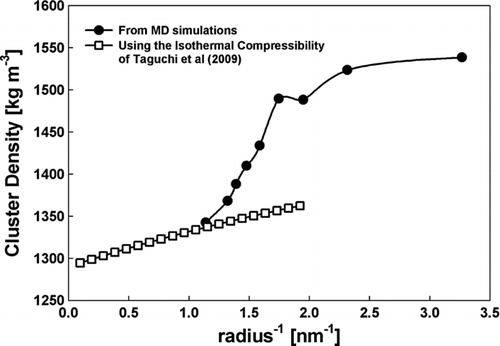Figures & data
FIG. 1 Schematic of parallel plate differential mobility analyzer P4 coupled to a QSTAR XL mass spectrometer. The DMA is operated with a small counterflow in the inlet, which makes it necessary to drive clusters into the DMA electrostatically, but also ensures that the recirculating sheath flow gas remains particle-free and of constant composition.
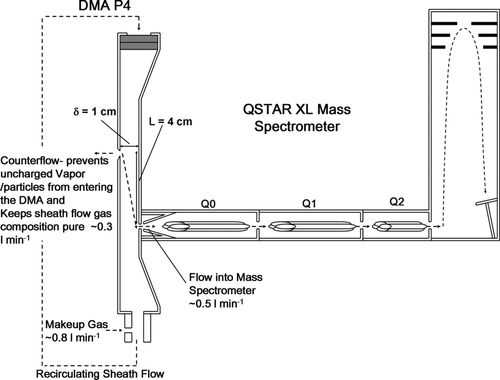
FIG. 2 False color-scheme contour plot of the signal intensity of EMI-BF4 clusters as a function of both the number of ion-pairs per cation in the cluster and the cluster inverse mobility. The “ladders” of line segments observed at discrete mobility are indicative of clusters undergoing neutral evaporation between the DMA and MS. The highest n/z cluster in each ladder has the correct mass at that mobility. Only singly charged clusters are shown in the plot.

FIG. 3 False color-scheme contour plot of the signal intensity of EMI-BF4 clusters as a function of both the number of ion-pairs per cation in the cluster and the cluster inverse mobility. The line segments of clusters with a given number of excess cations, z, are grouped into distinct bands in the contour plot, with the number of excess cations indicated for each band.

FIG. 4 Mass selected mobility spectra for singly charged clusters of n/z = 1.0 to n/z = 8.0. The multiple peaks observed in each spectrum are the result of ion-pair evaporation between the DMA and MS.
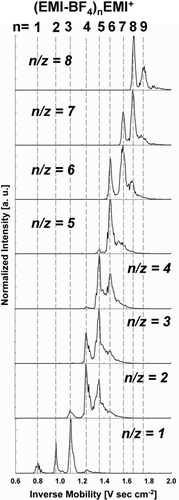
FIG. 5 The inverse square root of Zp */z as a function of the cube root of the cluster volume for singly (open symbols) and doubly charged (closed symbols) EMI-BF4 clusters. Also shown are the predicted curves from the modified Stokes-Millikan equation (solid line) and the expected curve for a point charge accounting for the charge-induced dipole potential (dashed curve).
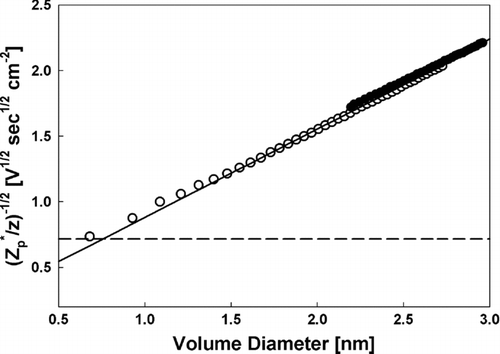
TABLE 1 Summary of the measured electrical mobilities, inferred mobility diameters (with the gas molecule diameter subtracted), inferred mass diameters, the percent difference in measured and predicted electrical mobilities (from the Stokes-Millikan equation), and the percent difference in mobility and mass diameters for the singly charged EMI-BF4 clusters
TABLE 2 Summary of the measured mobilities, inferred mobility diameters (with the gas molecule diameter subtracted), inferred mass diameters, the percent difference in measured and predicted electrical mobilities (from the Stokes-Millikan equation), and the percent difference in mobility and mass diameters for selected doubly charged EMI-BF4 clusters
FIG. 6 The mobility-based cluster density ρZ = mp/volume as a function of the number of ion-pairs in the EMI-BF4 clusters. Open Symbols: singly charged clusters; Closed Symbols: doubly charged. The horizontal dashed lines denote the expected densities based on cluster volumes accounting for the void volume fraction.
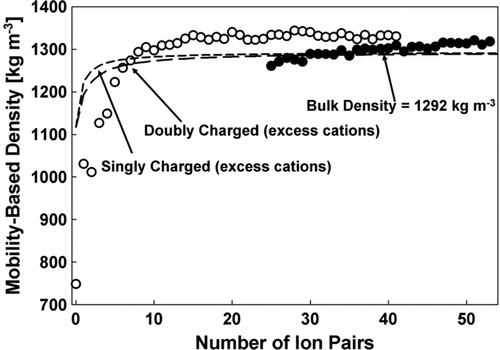
TABLE 3 Void volume fractions and densities for IL clusters as determined from molecular dynamics simulations as well as resulting molecular structures. The various clusters are shown at different magnifications
FIG. 7 Density as a function of the curvature for clusters n = 1 to n = 11 based on the void fraction from MD simulations (line with circular markers). Also shown is the isothermal compressibility inferred for EMI-BF4 from CitationTaguchi et al. (2009) based on a bulk density of 1290 kg/m3 and a surface tension of 52 N/mm.
